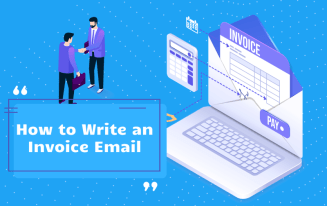How to write an email requesting something

Increasingly, we turn to email as a way of requesting things from people, but if you’ve never written an email asking for something from someone, you may wonder how to write one. Knowing how to make effective requests via email can give you an increased chance to get what you want. This guide will help you to look at each step in the process to craft a well-composed and precise request email. Let’s take a look.

Employ the full range of AI advantages with AImReply and express your thoughts faultlessly in every email.
Table of Content
Step #1: Write a Compelling Subject Line
Without a compelling subject line, no one will open your email. The first biggest step is getting them to open the email, and to do that, you need to write a subject line that will make them want to open it. Think of something that will grab their attention and set the tone right. The subject line should indicate exactly what you would like from them.
Resist the urge to write a generic title since this will more often than not wind up ignored. Generic title examples would include titles like, “Requesting documents,” or “Meeting follow-up.” Unless they were extremely eager before, you won’t excite them with a subject like that.
Try to think of a headline that would show urgency. When someone sees a timely email and if it’s relevant to them, it will get them to the point of opening your email.

Step #2: Open with a Greeting
You will start the email off with a greeting. Remember that keeping it professional will set the tone for the rest of your request. How you greet the person doesn’t matter as much as how you use their actual name when greeting them. Avoid giving them a generic placeholder name because this will immediately set the tone negatively.
During this initial greeting, you want to establish mutual trust and create a positive first impression to increase the chances that they would agree to your request.

Step #3: Make the Request
Usually, people will start off with a polite introduction, before making the request, and this is often seen as common courtesy. Making a request of a total stranger without even an introduction with high chances will find itself in the trash or spam folder. Think about it. Would you trust someone who's made a request for you via email without even introducing themselves? After you make the introduction, you can hop right into the request to ensure that as many people as possible will see your request.

When you make the introduction include the following things:
- Full name;
- Organization;
- Job title.
Once you've made the introduction, you want to stay as concise and to the point as possible. If you are attaching supplementary documents, be sure to mention them ahead of time. You don’t want to send out an email request that includes documents without mentioning them because it could be seen as rude.

Step #4: Write the Benefits of the Request
After you write the request, you will want to follow it up with the benefits for your recipient. You could use the next paragraph to demonstrate the value that they will receive. This step matters because the person on the other side of the email will have an increased likelihood of following up with your request if they receive some sort of value in exchange for them.
Think of the most compelling and persuasive reasons that they would want to comply with your request.

Step #5: Make a Call to Action and Sign Off
Many people forget the call to action, which is extremely important in an email request. You want them to know the specific action that you would like for them to take. Furthermore, it should be a single specific action. It should also be clear what you would like for them to do. How you would go about this will depend on the nature of the email.
After you end with the call to action, just sign off with your name or an email signature. Just as a side note here, having an email signature can boost the credibility of your company so that they would trust you more. At the end, you will want to include your full name, job title, organization, and phone number. Including this information ensures that the third party can contact you for further discussion.

Tips for When You Write an Email Request
Tip #1 Focus on Them: You may see a higher chance of success with your request if you focus exclusively on them. Think about the nature of your request and how it can help. The request will increase in its likelihood of persuading them that doing this task will be of mutual benefit for both parties.
Tip #2 Keep Trying: Getting someone to agree to an email request often becomes a numbers game where you need to send out more than a few dozen emails to get someone who will agree. Even if the first person gives no response, keep trying until you see a response with someone agreeing to fulfill it. Few people will get a positive response with the first email, and even if they do, it has more to do with luck than anything else.
Tip #3 Use an AI Email Writing Assistant: As you can imagine, getting someone to the point where they will say yes to your request will take more than a few sent out emails. This can wind up taking a lot of time, but you can accelerate this process by using what’s known as an email writing assistant. The technology is relatively new, but it allows you to write compelling emails within seconds, and you can send out thousands of emails to potential prospects who could fulfill your request. If you’re looking for an AI email writing assistant, we would recommend checking out AImReply. This assistant will help you to write perfectly crafted email requests and send them out to increase your chances of a response.

Tip #4 Show Proof of Need: Whenever your request would include something related to volunteer work or charity, you might tell them about the need at your organization for this request. Many times, this can be a powerful tool for persuasion. Show the recipient how their donation would have a positive impact on the world.
Tip #5 Give Them Further Documents: If you give documents in an email as an attachment, remember to mention it to the person as a courtesy. Some of the common things that you would include are things like sales proposals, resumes, billing statements, informational brochures, and grant applications. Think of whatever you would need to further convince the person to fulfill the request that you made by email.
Tip #6 Organize Your Request: Before you start with your email request, you may find it helpful to organize your request. Put your thoughts down and think about the specifics of your request. The considerations that you make may vary, but doing this will help you to better understand how you can get positive responses. You can also use the time to think of supplemental documents that would help you to fulfill your request.
Tip #7 Be Clear on the Request: You also want to show them why you would want to make this request. For example, tell them specifically what you need and how it will be beneficial. You could use bullet points as a way to summarize it and make it easier to understand. Point out as well why they would be the right person to help you with fulfilling this request.

Here’s an example of a full request email:
Hey [First Name],
My name is [Your Name] and I am a [Job Position] at [Company]. I am writing this email to [Add a Couple of Sentences to Describe Your Request].
This would be beneficial to you because [Give the Reasons in One to Three Sentences and What You Offer for the Request].
To make this happen, I would hope that you will [Talk About the Type of Action Needed].
Thank you for taking the time to read this email, and I hope that we can collaborate on this in the future.
Kind regards,
[Your Name]

When You Should Make an Email Request of Someone
We’d like to help you understand when it would make sense to make an email request. In general, it would be best to avoid making an email request in cases where you need this done in a time-sensitive fashion. For cases like that, you would be better off calling them or finding another way to contact them.
Many people will jump straight into emails when they may be able to fulfill their request more easily using another channel. It depends on the nature of what you want to do. The issue with emails is that they can ignore them or miss them in the inbox. Email requests work best for those occasions where the need isn’t immediate.

Conclusion
An email request can work in many cases, and a lot of people prefer to use emailing over other methods like the phone calls. If you’d like to use email for this, we would recommend that you use some tools to make the job much easier.
AImReply is able to send out perfectly written email requests in a way that will improve your chances of getting a positive response. Businesses are increasingly depending on email as a way of marketing their services, but if you’re not using an AI email writing assistant, you may find yourself behind the competition.

March 15, 2024
- 9 min
- 90
In the world of business, you have to be able to sell yourself. This is where it can be helpful to know how to write an introductory email for business purposes. As with any form of professional communication via email, there’s always a bit of tact when it comes to the writing.
March 25, 2024
- 10 min
- 144
Having to call in a sick day can be nerve-wracking as we want to convey the situation as clearly as possible. To avoid causing any hassle for colleagues when you’re sick, you’ll want to know how to write a sick day email for work.
March 18, 2024
- 8 min
- 130
If you want to get paid on time, you’ll want to learn how to write an invoice email for any professional situation. Although you’re owed payment for your work, being courteous and professional in your writing is important.











